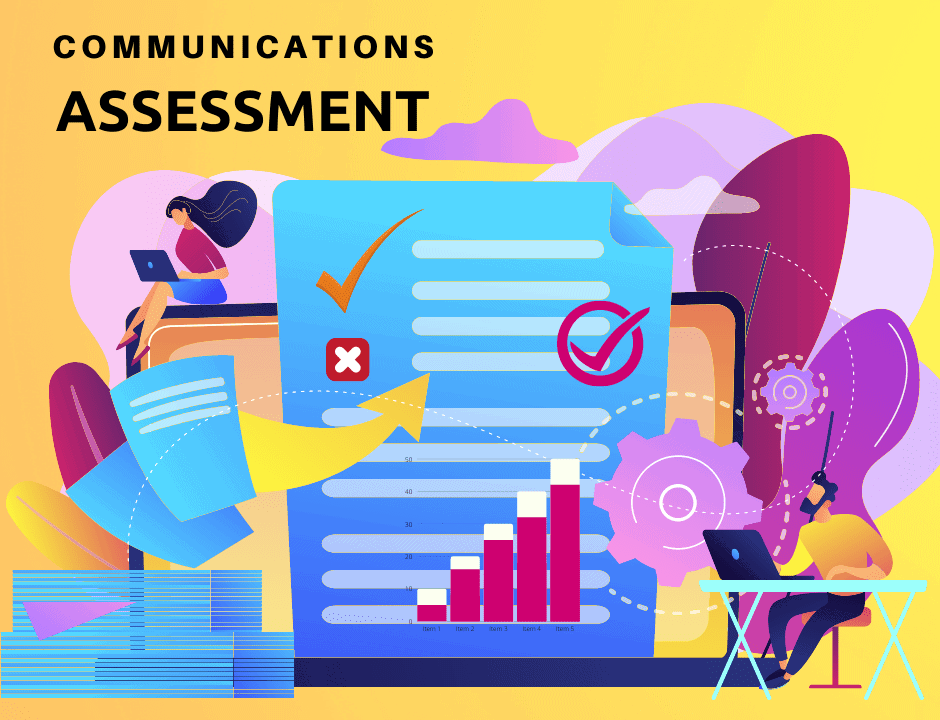Communications Assessment
Have you wondered if your organization’s communication is effective? If it is achieving your goals? A communication assessment can answer those questions.
A communication assessment entails a comprehensive review of your organization’s communications and feedback from your stakeholders to determine what’s working, what isn’t working, and where improvements can be made.
While this exercise can seem daunting, start with these five manageable steps as a start. The scale of this work always depends on the size and age of the organization.
Step 1: Determine The Scope
First, identify the audience your communication audit will focus on. Is the audience your employees? Customers? Members? Other stakeholders? Then drill down further to clarify segments. For example, all customers or a subset based on geography, demographics, purchase behavior, or other factors?
Next, determine all the departments within your organization that produce communications for this audience. This likely will include marketing and communications and may include human resources, sales, accounting, technology, and other functional areas.
Also, consider all the communication methods and channels your assessment will include; web, email, social media, video, print – even signage and displays.
Step 2: Collect Samples and Analyze
Once you’ve arrived at your scope, gather communication samples from all relevant departments, in all relevant formats, from the past 6-12 months. Develop a spreadsheet detailing each of the communications and the criteria on which you are assessing them.
Evaluation criteria may include brand alignment, content quality, calls to action, format, presentation, delivery method, and frequency.
As you analyze each communication against the criteria, note additional observations and questions as you go –this is the time to be objectively critical and measure against best practices. Rather than take what you see at face value, dig deep to envision what can be better and how.
Step 3: Collect Audience Feedback
Augment your analysis of communication materials with a collection of feedback directly from your target audience – because to fully understand if your communication is effective, you need to ask the people who receive it!
You can gather audience feedback via focus groups, surveys, or a combination of these methods. When developing survey instruments, strike a balance between your audience’s time, attention span, and the data you wish to collect. (In other words, don’t make them excessively long.)
To encourage honest feedback – and discourage courtesy bias – be sure to honor the privacy of your audience. Employing an independent firm is a customary and effective way to provide your audience with the assurance that they will remain anonymous and that their responses will remain confidential.
Step 4: Conduct a SWOT
With your material analysis complete and audience feedback collected, now it’s time to pull all your data together and perform a SWOT analysis.
Conducting a SWOT analysis will identify strengths to focus on, weaknesses to minimize, opportunities to consider, and threats to eliminate.
Organize your answers to these questions in a quadrant:
- Strength: What communication methods worked well?
- Weakness: What communication methods didn’t work well and needed to be changed?
- Opportunity: What opportunities could you leverage to improve communications?
- Threat: Is anything threatening your company’s communications with your target audience?
Step 5: PLAN
At the conclusion of your complete analysis, document a set of recommendations for your organization’s communications. Categorize the recommendations into 1) those your organization can implement relatively quickly with low impact to resources and budget, and 2) those that will require effort over time and may involve additional resources and funding.
Not all changes will likely be able to be made overnight, so be realistic. Build a plan of action in achievable phases with milestone goals over time (ex: 6, 12, 18 months).
For more tips, techniques and perspectives on brand communications, please visit the insights page. If you’re ready for a communications audit or have any questions get in touch.







